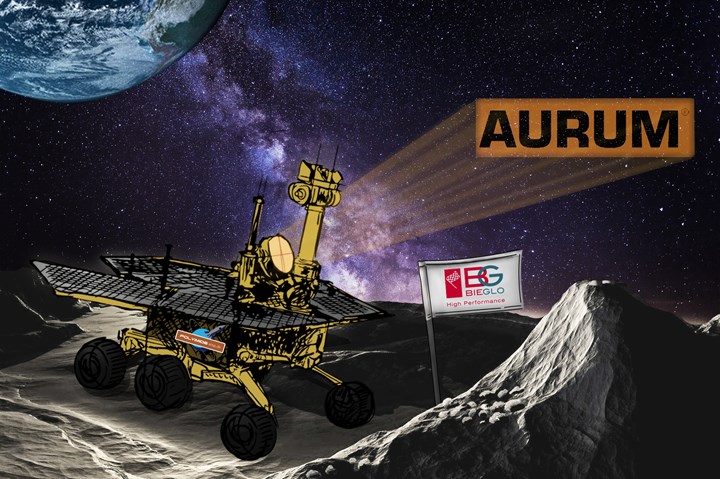Bieglo Group thermoplastic polymer supports project to 3D print structures on the moon
High-performance Aurum resin, combined with regolith material, will be used to create a printing material mixture that holds up under the harsh lunar environment.

Photo Credit: Bieglo Group.
(Hamburg, Germany), with its U.S. subsidiary (Katy, Texas), is supporting a project by Engineering Polytechnique Montréal and HEC Montréal students to design and demonstrate the use of a 3D printer mounted on a lunar rover. Carried out in collaboration with the Canadian Space Agency and the Research Center for High Performance Polymer and Composite Systems (CREPEC), the 3D printer will be printing structures mainly using in-situ resources such as regolith, a layer of unconsolidated rocky material covering bedrock, as well as Bieglo Group’s high-performance thermoplastic polymer, . A combination of these two materials — regolith and Aurum — will be used to create the printing material mixture required under harsh lunar environment.
Aurum is a high-heat resistant thermoplastic resin produced by Mitsui Chemicals Inc. (Tokyo, Japan) and marketed and distributed by Bieglo in Europe and BARplast LLC in the U.S. Noteworthy features include high temperature stiffness with a glass transition temperature (Tg) of 245ºC —which Bieglo claims is the highest class of Tg of any thermoplastic resin — and excellent sliding properties. Aurum’s coefficient of expansion is also stable up to 245ºC and can be controlled at an equivalent level to aluminum. Aurum also exhibits resistance to radiation, and has a stable coefficient of friction and low friction wear, making it resistant to abrasion caused by lunar dust. Moreover, says Bieglo, Aurum has an exceptionally clean TPI with very small outgas properties.
Related Content
-
JEC World 2024 highlights: Thermoplastic composites, CMC and novel processes
CW senior technical editor Ginger Gardiner discusses some of the developments and demonstrators shown at the industry’s largest composites exhibition and conference.
-
MFFD longitudinal seams welded, world's largest CFRTP fuselage successfully completed
Fraunhofer IFAM and partners have completed left and right welds connecting the upper and lower fuselage halves and sent the 8×4-meter full-scale section to ZAL for integration with a cabin crown module and testing.
-
The potential for thermoplastic composite nacelles
Collins Aerospace draws on global team, decades of experience to demonstrate large, curved AFP and welded structures for the next generation of aircraft.



